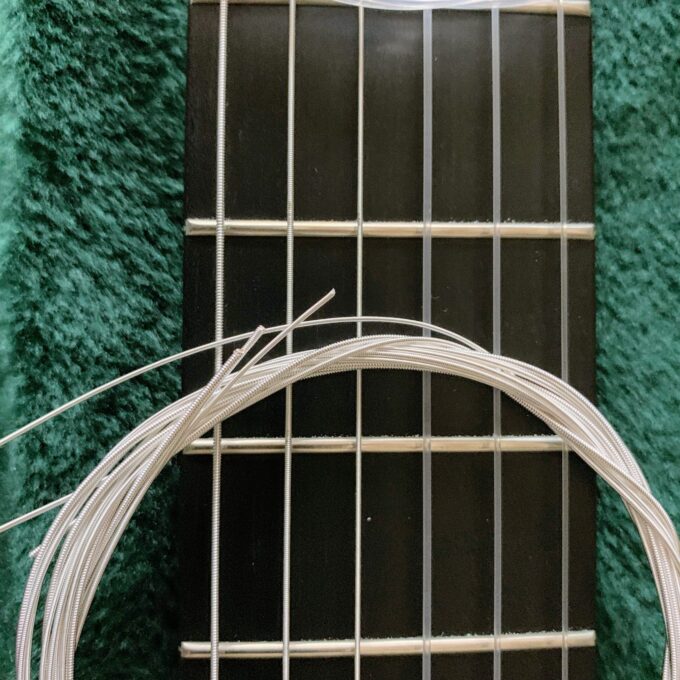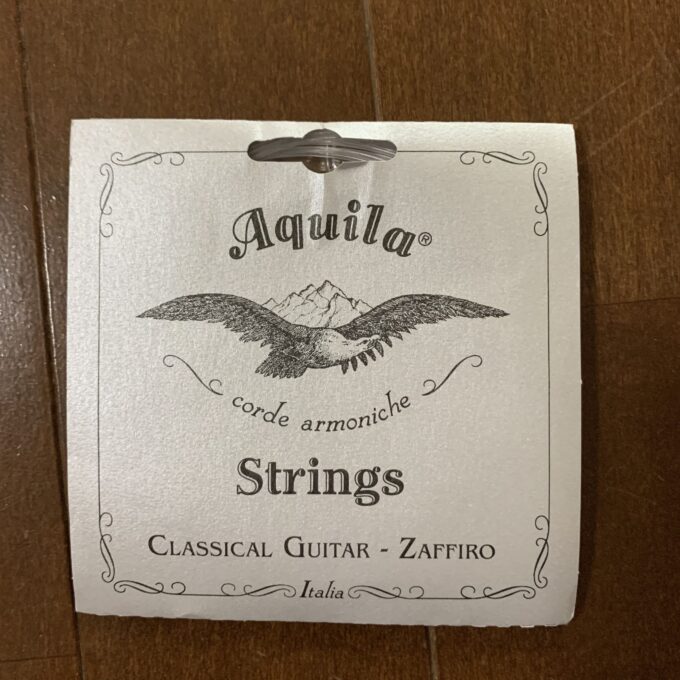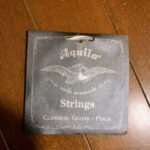This is the second review of strings from Aquila, a string manufacturer that goes its own way. This time it’s the Zaffiro, which means “Sapphire” in English.

The following article is a summary of the string reviews/feedback/information articles on this blog:
As to Aquila, refer to the following article:
Strings made without fluorocarbon with the sound of carbon strings in mind
These Zaffiro strings are made with the sound of carbon strings in mind.
But, like Aquila, it does not use carbon as a raw material. As you can see in the following article, the treble strings are made of Nyloplant and the bass strings are made of Super Nylgut.
The Zaffiro also has a low tension, and according to the Gendai Guitar Magazine, the tension was lower than Hannabach’s Yellow and Pro Arte’s Low:
Treble strings made of 100% plant-derived raw materials
Nyloplant, a treble string, is made from 100% plant-derived materials, rather than petroleum-based materials like regular nylon and fluorocarbon.
In addition, the extrusion process is also done at Aquila, which reduces the carbon footprint by 50%.
FYI, if you search for plant-derived nylon, you will find that it is made from castor oil from the seeds of the euphorbiaceae sesame plant. I don’t know if this is the case with Aquila, but it seems that plant-derived nylon is commonly used in the world.
As for the sound, they seem to be aiming for something closer to carbon strings, and the brilliance seems to be in the middle of Aquila’s lineup of strings for classical guitar.

It looks like this, milky white. The one on the guitar is Aquila’s Perla, and I think it’s more white color.
Super Nylgut bass strings
On the other hand, the bass strings are made of Supernylgut (Super Nile Gut).
Super Nylgut is a newer version of Nylgut that uses plastic to achieve the hardness of gut strings. And it has the following characteristics:
- Low growth rate and fast stability
- High durability
- Smooth surface (not relevant for bass strings)
Sounds great.

こちらも張ってあるぺルラと比較してみましたが、銀メッキの金属弦としてはあまり変わりがありませんでした。
Light and bright sound.
I put it up immediately, and I feel it has a light and bright sound.
The treble strings are certainly closer to the direction of the carbon strings than the nylon strings. The thickness is close to nylon strings and the tension is even lower, so they are very easy to play.
On the other hand, perhaps because of the low tension, it has a light sound rather than the tense sound of carbon strings. In the sense that the sound is produced even when played lightly, it is similar to the Dogal’s Diamante.
The strings on the Diamante are quite thin, but not so much on the Zaffiro, so if you’re worried about thickness, this is the one for you.
The bass strings also seem to be characterized by a light and bright sound rather than a heavy one.
Compared to the Perla, it has a metallic sound, but it doesn’t sound so jangly. On the other hand, I think Perla is better in the sense of massive sound.
The bass strings are also easy to play because of their low tension.
Recommended for people who like the sound of carbon strings but concerning about tension or thickness, only light sound might be a problem
Zaffiro is a good choice for those who like the sound of carbon strings but are concerned about the high tension and thinness of carbon strings.
I think it’s attractive that it has the thickness of a nylon string, but with less tension and sounds like a carbon string.
On the other hand, the sound is light due to the low tension. It can be a bad point and also a good point, so I guess it’s a preference.
(P.S.): The durability is not so short, but not so long. When I changed to other modern strings, I noticed that the sustain was shorter in both bass and treble.







